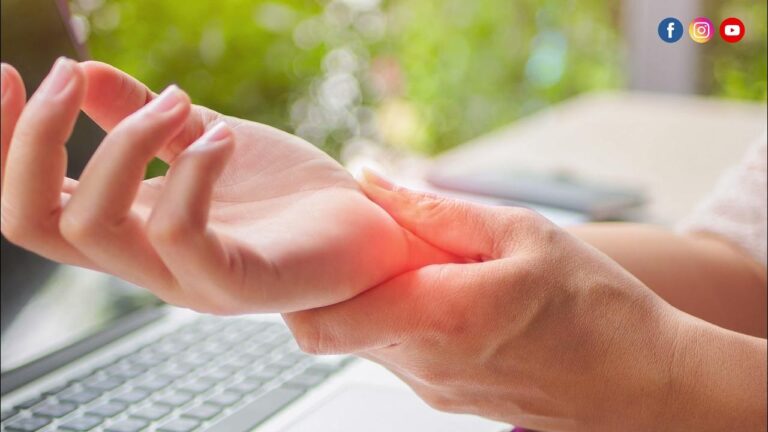Growing children are often active and full of energy. But sometimes, they experience pain in their knees or heels, especially during or after sports. Two common causes of this pain are Osgood-Schlatter disease and Severs disease. These conditions may sound serious, but with the right care, they can be managed well. Both issues are linked to growth and physical activity. So, they mostly affect children and teenagers who play a lot of sports.
Osgood-Schlatter disease usually causes pain and swelling just below the knee. On the other hand, Severs disease leads to pain in the heel. These conditions may limit movement and lower your child’s confidence. However, the good news is that both can improve with proper rest, exercise, and guidance.
That’s where Physiotherapy Services in Edinburgh can help. A professional physiotherapist can create a gentle and effective plan. This may include stretching, strengthening, and activity changes to ease the pain.
With the right support, your child can return to their normal routine and enjoy activities again without discomfort. If your child is showing signs of pain in the knees or heels, it’s time to take action early. Learning about these conditions is the first step to finding relief.
Now, let’s explore these helpful sections below to understand more:
- Understanding Osgood Pain
- Signs of Severs Disease
- Causes Behind Knee Aches
- Safe Physio for Kids
- Long-Term Relief Methods
Understanding Osgood Pain
Osgood-Schlatter disease often affects growing children, especially those who play sports. It causes pain and swelling just below the knee. The pain usually gets worse during running, jumping, or climbing stairs. This happens when the tendon pulls on the growth plate at the top of the shinbone. As the bones grow, the stress can lead to pain and inflammation.
However, this condition is not dangerous. It usually gets better over time. Still, it can make daily movement hard for kids. That’s why early care is important. Rest, ice packs, and stretching can help reduce pain.
If your child shows signs of knee pain, it’s best to act early. Learning about this condition helps parents and children feel less worried. With simple exercises and support, your child can feel better.
Signs of Severs Disease
Severs disease mostly affects the heel in growing children. It happens when the heel bone grows faster than the muscles and tendons. As a result, children feel pain or tenderness in the heel, especially after playing sports.
The pain may come and go but often gets worse with running or jumping. Children may also walk with a limp or avoid activities they love. This can impact both their physical and emotional well-being.
Luckily, early care can ease symptoms quickly. Rest, ice therapy, and proper shoes can help. Also, gentle stretches for the calves and feet can reduce tightness.
With expert guidance from Physiotherapy Services in Edinburgh, your child can follow a plan to heal. A physiotherapist will suggest safe exercises and monitor progress.
Now that we understand Severs disease better, let’s explore what actually causes these knee and heel issues in children.
Causes Behind Knee Aches
There are several reasons behind knee and heel pain in growing children. One major cause is overuse. When kids play a lot of sports without enough rest, their joints and tendons get stressed.
Growth spurts also play a role. As bones grow quickly, the muscles and tendons may not keep up. This creates tightness and pain, especially in the knees and heels. Poor footwear, bad posture, and muscle weakness can make things worse.
Other factors include lack of warm-up, sudden activity increases, or flat feet. But the good news is most of these causes can be managed.
A proper care plan helps reduce pain and prevent further issues. Physiotherapy Services in Edinburgh focus on identifying these causes. They create treatment plans that are safe and easy for kids to follow.
With the causes now clear, let’s look at safe and gentle physiotherapy options designed especially for children.
Safe Physio for Kids
Children need a special approach to physiotherapy. Their bodies are still growing, so exercises must be safe, light, and playful. That’s why professional care is very important.
Physiotherapy helps reduce pain and improves flexibility. For Osgood-Schlatter and Severs disease, treatment often includes stretching tight muscles and strengthening weak ones. Therapists also teach children how to move safely.
Using gentle methods like massage, balance work, and simple routines makes the process fun and effective. Kids feel better when they are involved and understand what’s happening.
Also, experts guide parents so they can support their children at home. That makes healing quicker and smoother. The goal is to return to normal activity without pain.
Physiotherapy Services in Edinburgh offer this kind of care. With the right support, your child can recover safely. Now let’s talk about how to keep this pain away in the long term.
Long-Term Relief Methods
Preventing future pain is just as important as healing. Simple steps can keep your child healthy and active. Regular stretching and warm-ups are key before any sport or activity.
Wearing the right shoes also helps. Good footwear supports the foot and reduces pressure on joints. Rest days should be part of every schedule. This allows muscles and bones time to heal.
It’s also helpful to check posture and walking patterns. Physiotherapists can suggest changes to reduce stress on the knees and heels. They may also guide you in setting limits on intense sports.
Physiotherapy Services in Edinburgh focus not only on healing but also on prevention. They teach children and parents how to stay active without injury.
Conclusion
In conclusion, Osgood-Schlatter and Severs disease may sound serious, but they are manageable. With early care, expert guidance, and healthy habits, your child can move freely again.







